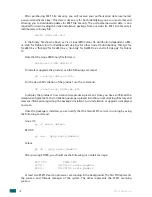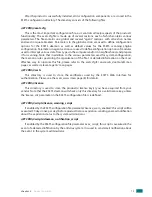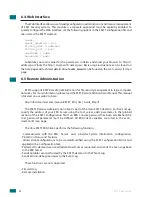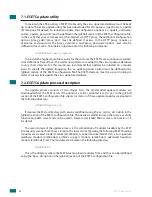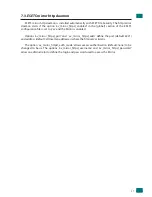
13
After the product is successfully installed, all its configuration components are stored in the
ESETS configuration directory. The directory consists of the following files:
@ETCDIR@
/esets.cfg
This is the most important configuration file, as it controls all major aspects of the product‘s
functionality. The esets.cfg file is made up of several sections, each of which contains various
parameters. The file contains one global and several "agent“ sections, with all section names
enclosed in square brackets. Parameters in the global section are used to define configuration
options for the ESETS daemon as well as default values for the ESETS scanning engine
configuration. Parameters in agent sections are used to define configuration options of modules
used to intercept various data flow types in the computer and/or its neighborhood, and prepare
it for scanning. Note that in addition to the various parameters used for system configuration,
there are also rules governing the organization of the file. For detailed information on the most
effective way to organize this file, please refer to the esets.cfg(5) and esets_daemon(8) man
pages, as well as relevant agents‘ man pages.
@ETCDIR@
/certs
This directory is used to store the certificates used by the ESETS Web Interface for
authentication. Please see the esets_wwwi man page (8) for details.
@ETCDIR@
/license
This directory is used to store the product(s) license key(s) you have acquired from your
vendor. Note that the ESETS daemon will check only this directory for a valid license key, unless
the ‘license_dir‘ parameter in the ESETS configuration file is redefined.
@ETCDIR@
/scripts/license_warning_script
If enabled by the ESETS configuration file parameter ‘license_warn_enabled’, this script will be
executed 30 days (once per day) before product license expiration, sending an email notification
about the expiration status to the system administrator.
@ETCDIR@
/scripts/daemon_notification_script
If enabled by the ESETS configuration file parameter ‘exec_script‘, this script is executed in the
event of a detected infiltration by the antivirus system. It is used to send email notification about
the event to the system administrator.
chapter 4
Product Roadmap
Summary of Contents for FILE SECURITY
Page 1: ...ESET File Security Installation Manual and User Guide we protect digital worlds...
Page 3: ...Chapter 1 Introduction...
Page 5: ...Chapter 2 Terminology and abbreviations...
Page 8: ......
Page 9: ...Chapter 3 Installation...
Page 11: ...Chapter 4 Architecture Overview...
Page 14: ......
Page 15: ...Chapter 5 Integration with File System services...
Page 20: ......
Page 21: ...Chapter 6 Important ESET File Security mechanisms...
Page 25: ...Chapter 7 ESET Security system update...
Page 28: ......
Page 29: ...Chapter 8 Let us know...
Page 31: ...Appendix A PHP License...










